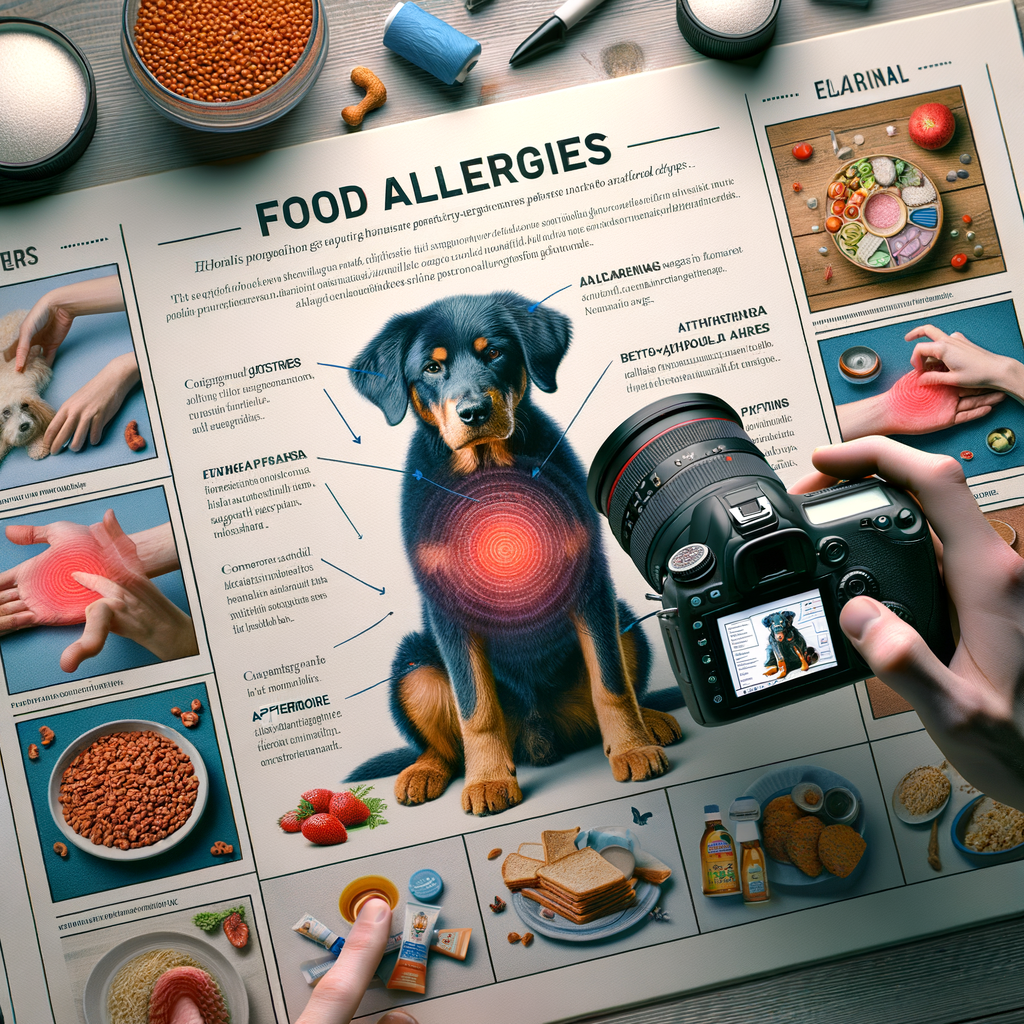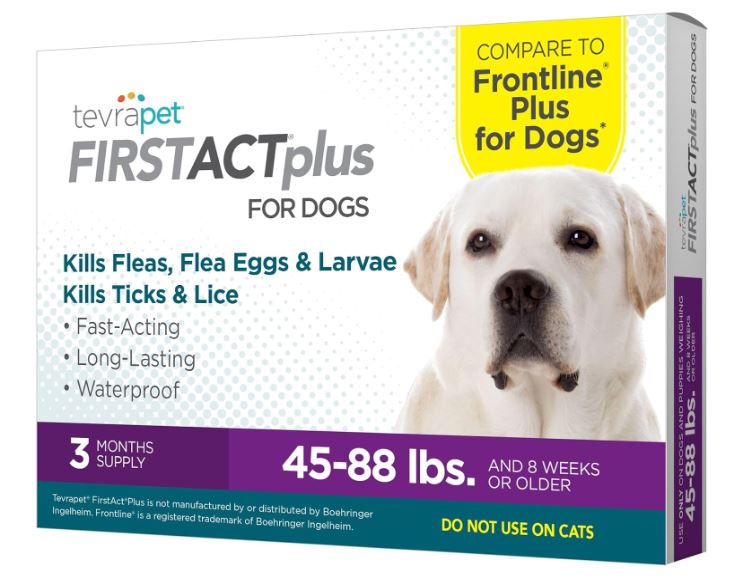Understanding Food Allergies in Dogs: Managing Itching and Discomfort

Understanding Food Allergies in Dogs: Managing Itching and Discomfort
-
Table of Contents
Introduction
Understanding Food Allergies in Dogs: Managing Itching and Discomfort
Food allergies in dogs can cause a range of symptoms, including itching and discomfort. It is important for pet owners to be aware of the signs of food allergies and how to manage them effectively. In this article, we will discuss the causes of food allergies in dogs, common symptoms to look out for, and strategies for managing itching and discomfort in allergic dogs.
Understanding the Role of Environmental Allergies in Triggering Food Allergy Symptoms in Dogs
Food allergies in dogs can be a frustrating and uncomfortable experience for both pets and their owners. One common symptom of food allergies in dogs is itching and discomfort, which can manifest in various ways such as scratching, licking, and chewing on their skin. While food allergies are often thought to be caused by the ingredients in their diet, environmental allergies can also play a significant role in triggering food allergy symptoms in dogs.
Environmental allergies, also known as atopic dermatitis, are caused by a hypersensitivity to substances in the environment such as pollen, dust mites, and mold. When a dog with environmental allergies comes into contact with these allergens, their immune system can overreact and trigger an inflammatory response. This can lead to symptoms such as itching, redness, and inflammation of the skin, which can exacerbate food allergy symptoms in dogs.
It is important to understand the role of environmental allergies in triggering food allergy symptoms in dogs in order to effectively manage their itching and discomfort. By identifying and addressing environmental allergens, pet owners can help reduce the severity of their dog’s food allergy symptoms and improve their overall quality of life.
One way to manage environmental allergies in dogs is to minimize their exposure to common allergens in the environment. This can be done by keeping the dog indoors during peak allergy seasons, using air purifiers to reduce airborne allergens, and regularly cleaning and vacuuming their living space to remove dust and pollen. Additionally, bathing the dog regularly with a hypoallergenic shampoo can help remove allergens from their skin and coat, reducing the risk of triggering food allergy symptoms.
In addition to minimizing exposure to environmental allergens, pet owners can also work with their veterinarian to develop a comprehensive treatment plan for managing food allergy symptoms in dogs. This may include dietary changes, such as switching to a hypoallergenic or limited ingredient diet, to help identify and eliminate potential food allergens. It is important to work closely with a veterinarian to ensure that the dog’s nutritional needs are being met while also addressing their food allergies.
In some cases, medication may be necessary to help manage itching and discomfort associated with food allergies in dogs. Antihistamines, corticosteroids, and other medications can help reduce inflammation and itching, providing relief for dogs suffering from food allergy symptoms. It is important to follow the veterinarian’s recommendations for medication dosage and administration to ensure the dog’s safety and well-being.
Overall, understanding the role of environmental allergies in triggering food allergy symptoms in dogs is essential for effectively managing their itching and discomfort. By identifying and addressing environmental allergens, minimizing exposure to common triggers, and working with a veterinarian to develop a comprehensive treatment plan, pet owners can help improve their dog’s quality of life and reduce the impact of food allergies on their health. With proper care and management, dogs with food allergies can live happy, healthy lives free from itching and discomfort.
Implementing an Elimination Diet for Dogs with Food Allergies

Food allergies in dogs can be a frustrating and uncomfortable experience for both pets and their owners. If your furry friend is constantly scratching, licking, or experiencing gastrointestinal issues, it may be time to consider the possibility of a food allergy. While food allergies are not as common as environmental allergies in dogs, they can still cause a great deal of discomfort and distress.
One of the most effective ways to manage food allergies in dogs is through an elimination diet. This involves removing potential allergens from your dog’s diet and slowly reintroducing them to identify the specific trigger. Implementing an elimination diet can be a time-consuming process, but it is essential for pinpointing the cause of your dog’s symptoms and providing relief.
When starting an elimination diet for your dog, it is crucial to consult with your veterinarian to ensure that you are providing a balanced and nutritious diet. Your vet may recommend a hypoallergenic dog food that is specially formulated to be free of common allergens such as beef, chicken, dairy, wheat, and soy. These hypoallergenic diets are designed to be easily digestible and gentle on your dog’s stomach, making them an ideal choice for dogs with food allergies.
During the elimination phase of the diet, it is important to strictly adhere to the prescribed diet and avoid feeding your dog any treats, table scraps, or other foods that could contain potential allergens. This can be challenging, especially if your dog is used to receiving treats throughout the day, but it is essential for accurately identifying the trigger of their allergies.
As you continue with the elimination diet, monitor your dog closely for any changes in their symptoms. Keep a detailed journal of their daily food intake, symptoms, and any other relevant information that may help you and your vet identify patterns or triggers. This information will be invaluable in determining the cause of your dog’s food allergies and developing a long-term management plan.
After a period of strict adherence to the elimination diet, your vet may recommend reintroducing potential allergens one at a time to see how your dog reacts. This process should be done gradually, with each new food being introduced for a period of at least two weeks before moving on to the next. If your dog shows signs of an allergic reaction, such as itching, redness, swelling, or gastrointestinal upset, it is important to stop feeding that food immediately and consult with your vet.
Once you have identified the specific trigger of your dog’s food allergies, you can work with your vet to develop a long-term management plan. This may involve feeding your dog a hypoallergenic diet for the rest of their life or finding alternative protein sources that do not trigger their allergies. Your vet may also recommend supplements or medications to help manage your dog’s symptoms and improve their overall quality of life.
Managing food allergies in dogs can be a challenging and time-consuming process, but with patience and dedication, you can help your furry friend live a happy and comfortable life. By implementing an elimination diet and working closely with your vet, you can identify the cause of your dog’s allergies and develop a plan to manage their symptoms effectively. Remember to always consult with your vet before making any changes to your dog’s diet or treatment plan, and never hesitate to seek professional help if you have any concerns about your dog’s health and well-being.
Identifying Common Food Allergens in Dogs
Food allergies in dogs can be a frustrating and uncomfortable experience for both pets and their owners. Itching, scratching, and discomfort are common symptoms of food allergies in dogs, and identifying the specific allergen can be a challenging process. However, by understanding the common food allergens in dogs and taking steps to manage itching and discomfort, pet owners can help their furry friends live a happier and healthier life.
One of the most common food allergens in dogs is protein, particularly from sources such as beef, chicken, and dairy products. Grains like wheat, corn, and soy are also common allergens for dogs. Other potential allergens include eggs, fish, and certain fruits and vegetables. It’s important to note that each dog is unique, and what may trigger an allergic reaction in one dog may not affect another.
If you suspect that your dog may have a food allergy, it’s important to consult with your veterinarian for a proper diagnosis. Your vet may recommend an elimination diet, where potential allergens are removed from your dog’s diet one by one to determine which one is causing the allergic reaction. This process can take time and patience, but it is essential for identifying and managing your dog’s food allergies.
Once the specific allergen has been identified, the next step is to manage your dog’s itching and discomfort. One of the most effective ways to do this is to switch your dog to a hypoallergenic diet. These diets are specially formulated to be free of common allergens and can help alleviate your dog’s symptoms. It’s important to follow your vet’s recommendations when selecting a hypoallergenic diet for your dog, as not all commercial diets are created equal.
In addition to switching to a hypoallergenic diet, there are other steps you can take to manage your dog’s itching and discomfort. Regular grooming and bathing can help remove allergens from your dog’s skin and coat, reducing the likelihood of an allergic reaction. You may also want to consider using a medicated shampoo or topical treatment to help soothe your dog’s irritated skin.
If your dog is experiencing severe itching and discomfort, your vet may recommend medications such as antihistamines or corticosteroids to help alleviate symptoms. These medications can provide temporary relief from itching and inflammation, but they are not a long-term solution for managing food allergies in dogs. It’s important to work closely with your vet to develop a comprehensive treatment plan that addresses your dog’s specific needs.
In conclusion, food allergies in dogs can be a challenging and frustrating experience for both pets and their owners. By understanding the common food allergens in dogs and taking steps to manage itching and discomfort, pet owners can help their furry friends live a happier and healthier life. If you suspect that your dog may have a food allergy, consult with your vet for a proper diagnosis and treatment plan. With the right care and attention, you can help your dog overcome food allergies and enjoy a better quality of life.
Conclusion
Understanding food allergies in dogs is crucial for managing itching and discomfort. By identifying and eliminating the allergen from their diet, pet owners can help alleviate their dog’s symptoms and improve their overall quality of life. It is important to work closely with a veterinarian to properly diagnose and treat food allergies in dogs to ensure they receive the best care possible.


